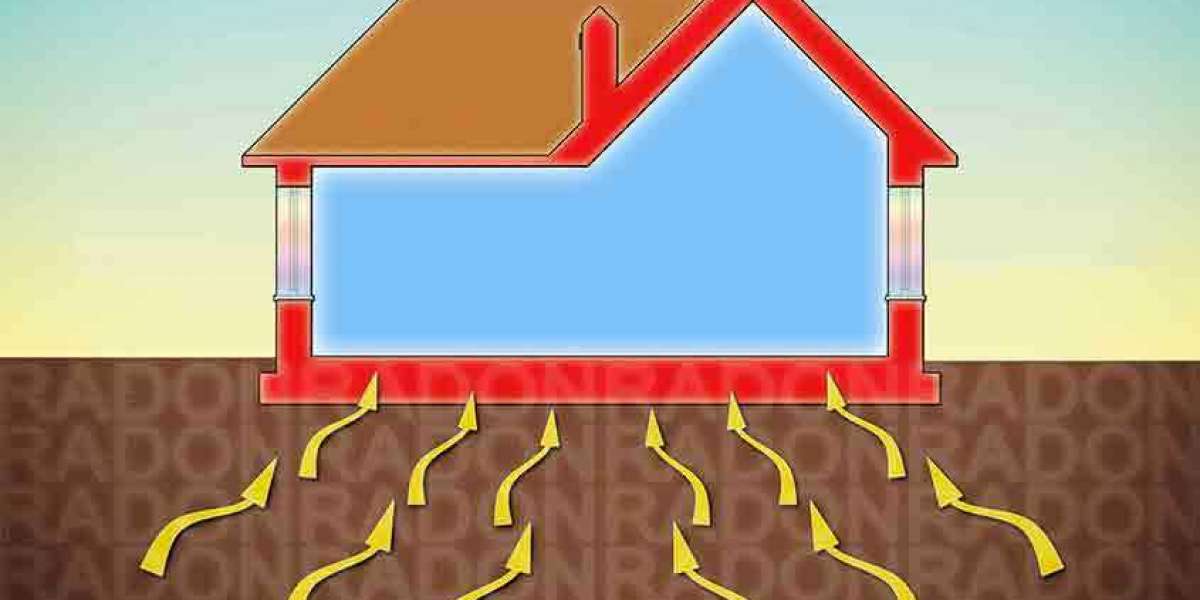Introduction: The Silent Threat Below the Surface
In the world of home safety, threats like fire hazards, carbon monoxide, and break-ins often take center stage. But what if one of the biggest dangers to your health is a radioactive gas you can’t see, smell, or taste, seeping into your home from beneath the ground?
This isn’t a science fiction scenario — it’s the reality of radon gas, and it’s particularly concerning for residents of Ottawa. With national studies and local surveys painting a worrying picture, the question arises: Is radon really a problem in Ottawa?
The short answer? Yes. But understanding why and what to do about it is crucial. In this article, we’ll explore the science behind radon, Ottawa’s unique geological risks, real data on local radon levels, and what homeowners can do to stay safe.
What Is Radon?
A Naturally Occurring Radioactive Gas
Radon is a colorless, odorless, tasteless gas produced from the radioactive decay of uranium in soil, rock, and water. As uranium breaks down underground, radon is released and rises toward the surface. Outdoors, it quickly disperses into the atmosphere. Indoors, however, radon can accumulate to dangerous concentrations — especially in basements and lower-level rooms.
The Health Risk: A Leading Cause of Lung Cancer
Radon is the second leading cause of lung cancer in Canada, responsible for about 3,000 deaths each year according to Health Canada. In fact:
- Radon exposure is the leading cause of lung cancer among non-smokers.
- Smokers exposed to radon face a 10x greater risk of developing lung cancer than those not exposed.
The only way to detect and address this risk is through Simon radon testing Ottawa.
Is Radon a Problem in Ottawa? A Closer Look
Ottawa’s Geological Makeup
Ottawa’s landscape is shaped by glacial activity, rich in granite, shale, and glacial till. These soil and rock types tend to contain higher levels of uranium — the very element that leads to radon production.
Key geological factors that make Ottawa a radon hotspot:
- Uranium-rich bedrock beneath the soil
- Clay-heavy glacial deposits that trap and transport radon gas
- A prevalence of basements and slab-on-grade foundations, ideal pathways for radon infiltration
Cold Climate = Sealed Homes
Ottawa’s long, cold winters also exacerbate the radon issue. During the heating season:
- Homes are sealed tightly to conserve energy.
- This reduces ventilation, allowing radon to build up indoors.
- The "stack effect" draws radon from the soil into the home through negative air pressure.
Combined, these factors make Ottawa homes more susceptible to elevated radon concentrations.
Real Data: Radon Levels in Ottawa Homes
National Radon Survey Findings
Health Canada’s Cross-Canada Survey of Radon Concentrations in Homes tested over 14,000 homes and found:
- The national average for homes exceeding 200 Bq/m³ (the action threshold) is 6.9%.
- In Ottawa, more than 20% of homes tested exceed this threshold — nearly three times the national average.
Local Testing Confirms the Risk
Various community-driven testing programs in Ottawa have found:
- Some neighborhoods, like Barrhaven, Orleans, Kanata, and Greely, report homes with radon levels over 1,000 Bq/m³.
- Even side-by-side houses can show dramatically different readings, emphasizing the need for individual testing.
These results clearly demonstrate that radon is not just a problem in Ottawa — it’s a widespread and urgent one.
How Radon Enters Homes in Ottawa
Radon moves from the soil into the home through:
- Cracks in basement floors and walls
- Openings around pipes and sump pumps
- Gaps in slab-on-grade foundations
- Floor drains and construction joints
The “vacuum effect” caused by warm air rising indoors draws radon upward from the soil. Poor ventilation and energy-efficient building practices can trap radon inside, increasing concentrations over time.
Who Is at Risk?
Homeowners
Any home in Ottawa — new or old, big or small — can have high radon levels. Risk is not determined by location alone, as radon levels can vary significantly even within the same street or neighborhood.
Renters
Tenants living in basement apartments or ground-floor units are at increased risk, especially if the space is poorly ventilated.
Children and Seniors
- Children breathe more rapidly and are more sensitive to environmental hazards.
- Seniors spend more time indoors and may have compromised lung function.
Smokers
The combination of tobacco use and radon exposure leads to an exponentially greater risk of developing lung cancer.
How to Know if Your Ottawa Home Has a Radon Problem
You Can’t Detect Radon Without a Test
Radon is completely undetectable by human senses. The only way to determine your exposure risk is to conduct a proper radon test.
Types of Radon Testing
DIY Radon Test Kits
- Available for $40–$80
- Typically use an alpha track detector
- Require 91+ days for accurate long-term results
- Return to lab for analysis
Professional Testing
- Cost ranges from $150 to $400
- Use Continuous Radon Monitors (CRMs) for real-time data
- Include detailed reports and expert consultation
- Ideal for homeowners, buyers, and real estate transactions
Note: Health Canada recommends long-term testing (at least 91 days) during the winter season for the most accurate results.
What Do Your Radon Results Mean?
Radon Level (Bq/m³)Risk CategoryAction Recommended
0–99 Low No action needed
100–199 Moderate Consider mitigation
200–600 High Fix within 2 years
600+ Very High Fix within 1 year
Real Examples in Ottawa
- A family in Kanata tested at 450 Bq/m³ and mitigated within months.
- A new-build in Barrhaven showed over 900 Bq/m³ due to an airtight building envelope.
- An Orleans townhouse, seemingly low-risk, tested at 1,200 Bq/m³.
These cases highlight the unpredictability of radon and the importance of testing regardless of home type or age.
What to Do If Your Radon Level Is High
Mitigation Is Effective and Reliable
Most Ottawa homes with high radon levels can be fixed within 1–2 days using a mitigation system.
Common Mitigation Method: Sub-Slab Depressurization (SSD)
- Involves installing a pipe and fan system below the home
- Vents radon from under the foundation to the outside air
- Reduces radon levels by up to 99%
- Costs between $2,000 and $3,500
Re-Test After Mitigation
It’s critical to retest your home 30–90 days after mitigation to ensure success. Many professionals include post-mitigation testing in their service package.
Radon in Ottawa’s Real Estate Market
Buying or Selling a Home?
- Radon disclosure is not mandatory in Ontario, but buyers are increasingly requesting it.
- Sellers can test in advance and provide results to attract informed buyers.
- Some real estate agents include radon clauses in purchase agreements.
Landlords and Tenants
While not yet regulated under Ontario law, landlords are expected to maintain safe living environments. Failure to address known radon issues could result in liability claims under the Residential Tenancies Act.
Radon Awareness in Ottawa
Government and Community Support
Health Canada
- Sets the national radon guideline (200 Bq/m³)
- Maintains a list of certified professionals for testing and mitigation
- Offers educational resources and public data
Take Action on Radon
- A national campaign offering free or low-cost radon test kits
- Runs the 100 Radon Test Kit Challenge in local communities
- Partners with cities and schools to improve awareness
Ottawa Public Health
- Provides local statistics and resources
- Encourages testing in residential, rental, and public buildings
Frequently Asked Questions
1. Can I open windows to lower radon levels?
Temporarily, yes. But this is not a reliable long-term solution — and ventilation changes make test results inaccurate.
2. Do newer homes have radon?
Yes. Airtight energy-efficient designs can trap more radon than older homes.
3. Should I test a condo or apartment?
Yes, especially if it's on the ground or basement level.
4. How often should I test?
- Every 5–10 years
- After major renovations or foundation work
- After installing a mitigation system
Conclusion: The Answer Is Yes — And Now You Know Why
So, is radon a problem in Ottawa? Undeniably, yes.
With over 20% of homes exceeding the national safety limit, radon poses a significant health risk to thousands of families across the city. Fortunately, the solution is simple, accessible, and effective.
Don’t wait.
- Test your home.
- Understand your level.
- Take action if necessary.
By doing so, you’re not just complying with public health advice — you’re making a proactive choice to protect your health and your family’s future.







